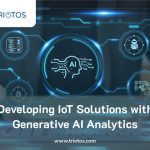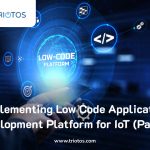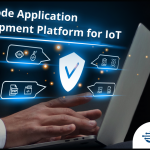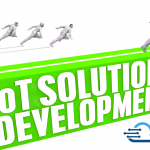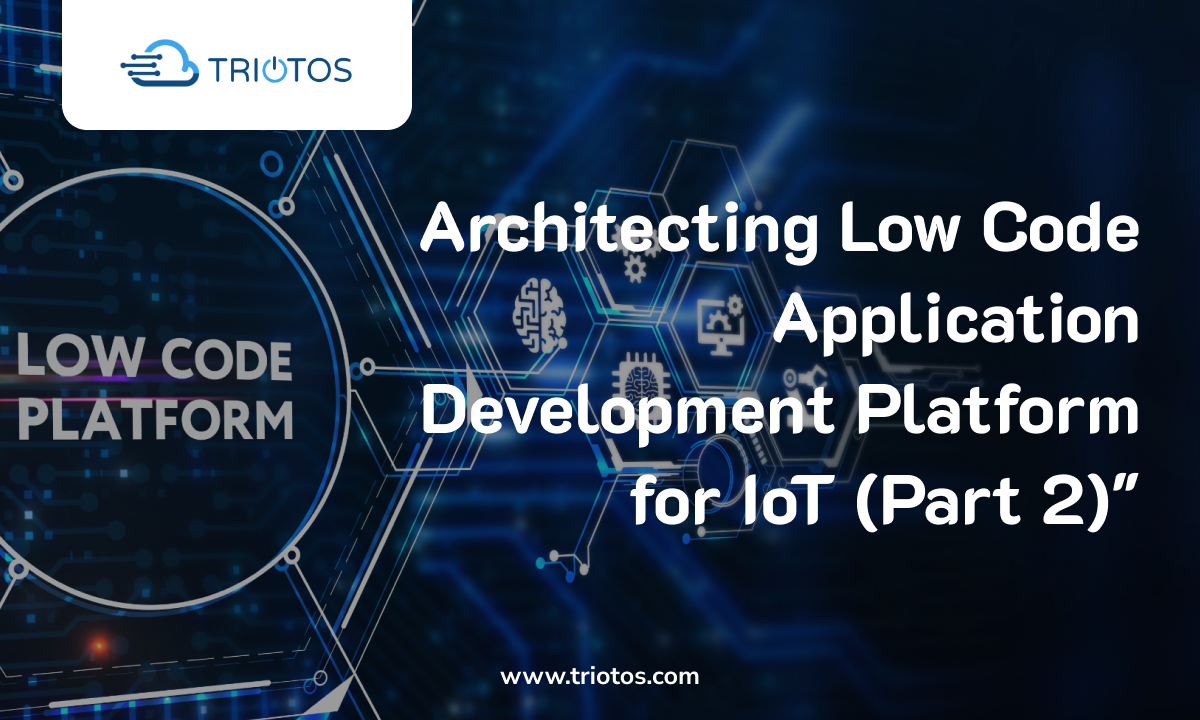
In a previous blog we discussed the feasibility of Low Code Application Development Platforms (LCDP) for IoT discussing the challenges of implementing LCDP capabilities across the 4 distinct components of an IoT solution:
- IoT Devices (Things)
- Connectivities (Wired and Wireless)
- Data Handling Platforms
- Applications (Web and Mobile)
Using End-to-end IoT Device Provisioning as an example we showed how this could be implemented using web and mobile applications. The question now becomes how to architect and implement this and other use cases and whether LCDP solutions for end-to-end IoT solutions exist today.
Architecting IoT LCDP Solutions – Start with the Applications
An IoT solution is made up of and supports a variety of Application ranging from IoT Device Programming and Configuring IoT Devices all the way to the business or consumer Mobile Apps and supporting API integrations. Some of these are functional like programming/configuring an IoT device or connecting it to the solution. Others are operational monitoring function and performance. A third category is focused on users of the solution – the main reason for developing it. Fourth, APIs provide information to external applications. A final category are initially unknown applications that evolve as a solution is developed or deployed. Each IoT solution thus has a unique list of applications that look something like this:
- IoT Device Configuration
- Device Provisioning (End-to-End)
- Usage Applications
- Solution Monitoring
- User Provisioning
- User Applications
- Data/Event
- Monitoring
- Reporting
- Notification/Alarm
- Analytics
- Insights
- Learning
- Intelligence
- Data/Event
- APIs
- Providing information to theird party applications
- Other Applications
- Deep Learning
- AI information derived from operations.
When developing an IoT solution, all these applications need be implemented and incorporated in a comprehensive architecture.
The first step in architecting LCDP IoT solutions is therefore to abstract and separate out the different Application parts and see how these can be implemented with Low Code or Graphical user interfaces. This includes the following steps:
Where and How are the Applications Implemented?
- Web Server, App servers, API platforms?
- What Information and Data Model do they depend on?
- What Common Functions and Data do they Share?
- What IoT System and Data Information do they depend on (spreadsheet)?
- Which subsystems, applications and services make up the IoT solution?
- These applications (data handling, data base, AI, ML)
- What are the Configuration/User interfaces of these subsystems?
The second step is to figure out how to incorporate the Application parts into an overall architecture that supports integration and configuration/development of the solution and applications. This can be done in three ways:
- Create an integration platform from scratch.
- Use a commercial IoT platform hoping that it supports all the functions and applications needed,
- Use existing frameworks and run-time environments to provide application platforms and integration with all subsystems.
The third step is to use or implement Low Code Development interfaces for configuration (and creation) of the IoT solution. This last step can be the most difficult as it depends on the selection is step 2 and the correct abstraction of all the applications and functions in step 1. It is therefore an interactive exercise of using the LCDP requirement in assessing the second step keeping the first step in mind. While perfectly doable, it requires a thorough knowledge of all the myriad parts of an IoT solution including device capabilities, data models, data handling platforms, resource service and the current state of the art in these areas. In a third blog we will take a look at how Triotos has developed a rapid onboarding IoT platforms with a growing set of Low Code Application Development interfaces using an industry leading cloud platform as a base.


